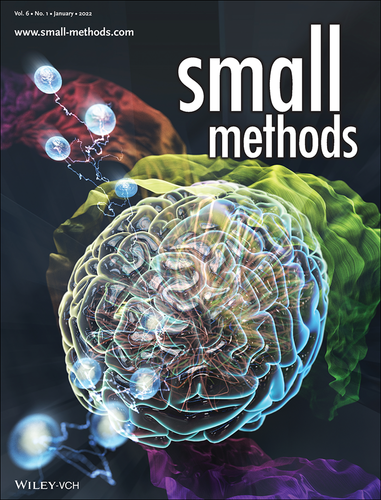Sodium Cholate-Based Active Delipidation for Rapid and Efficient Clearing and Immunostaining of Deep Biological Samples (Small Methods 1/2022)
Graphical Abstract
Front Cover
In article number 2100943, Chang and co-workers developed a novel sodium cholate-mediated tissue clearing method, called SCARF. By adopting an ion-conductive film as the separation barrier, SCARF renders orders of magnitude faster tissue transparency and better immunostaining capability than conventional SDS-based methods. Thus, SCARF would greatly facilitate the 3D structural mapping of biological tissues in various clearing regimes.





